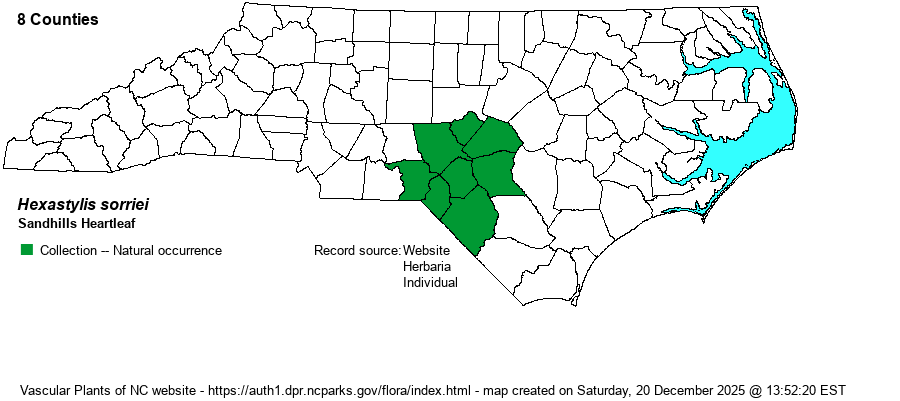| Identification | This species had previously been identified as either Hexastylis minor or H. virginica, prior to being described in 2011. Biologists felt that these two species, especially H. minor, seemed out of character and habitat in its sandy and relatively flat, blackwater habitat of pocosin margins, instead of rocky bluffs and slopes in the Piedmont. Thankfully, this new species description seems to end this confusion and mystery. This new species has similar round, glossy, green to dark green, and evergreen leaves as nearly all others in the genus, with the leaves about 3 across across and wide and with a cordate base. However, this species has only a light green mottling along the veins (or occasionally unmottled), typically less striking than the white veining pattern found on most leaves of these other two species. Otherwise, the flowers resemble H. minor -- brown on the outside of the calyx cup, and with spreading lobes. However, H. sorriei has these lobes only 1/5-inch long, much shorter than those of H. minor, and the calyx tube/cup is usually about 1/2-inch long or high, as opposed to about 2/3-inch in H. minor. These flower characters are rather slight, but the distinctly different habitats -- H. minor is essentially limited to the Piedmont and found on rocky or often dry slopes, as opposed to semi-wetland habitats in the Sandhills -- should separate the two. Leaf coloration should also be helpful, as well, but always use this with caution, and it is a good idea to see a number of plants or several populations to be reasonably sure of the identification. Thankfully, for people attempting to see this localized plant, there is much public land on the Sandhills Game Land and at Weymouth Woods Sandhills Nature Preserve to walk the outside of streamheads and look for this species. | |

